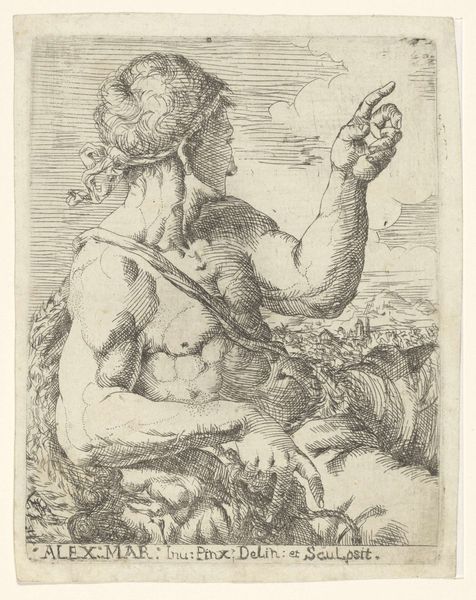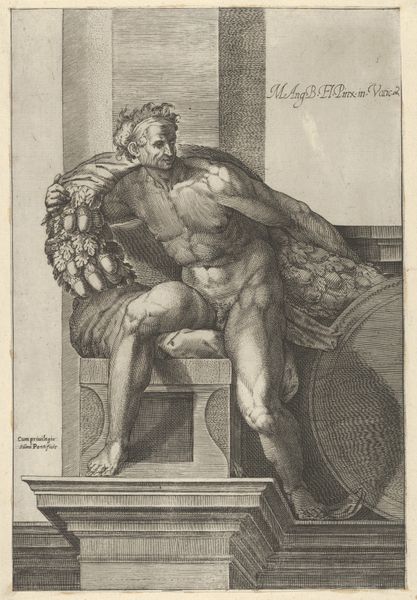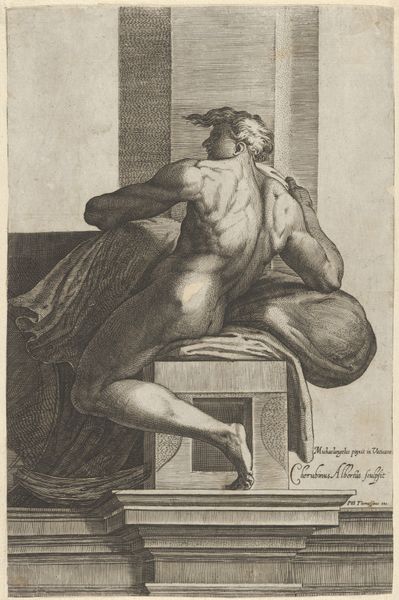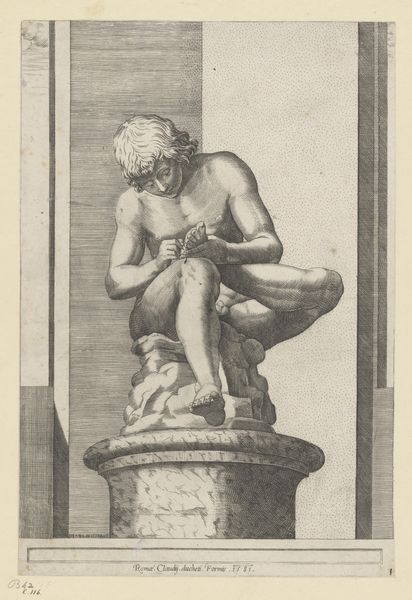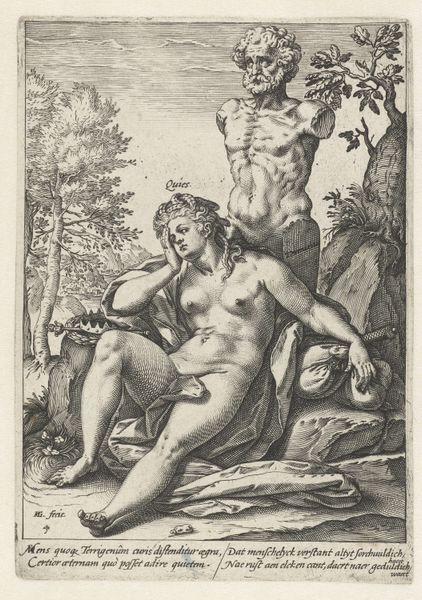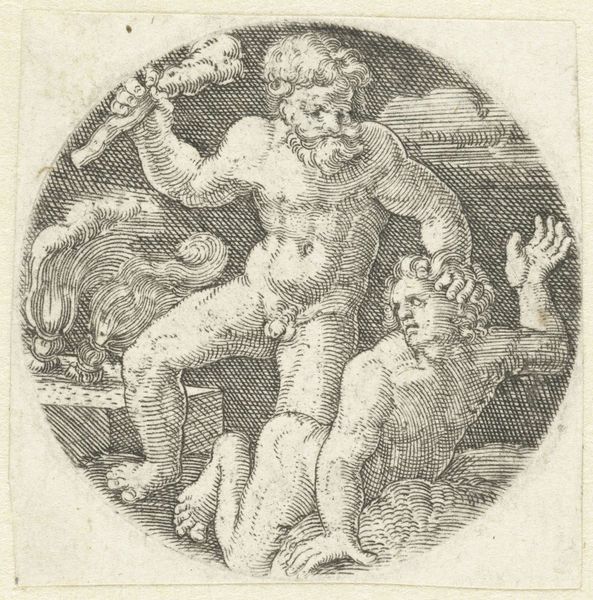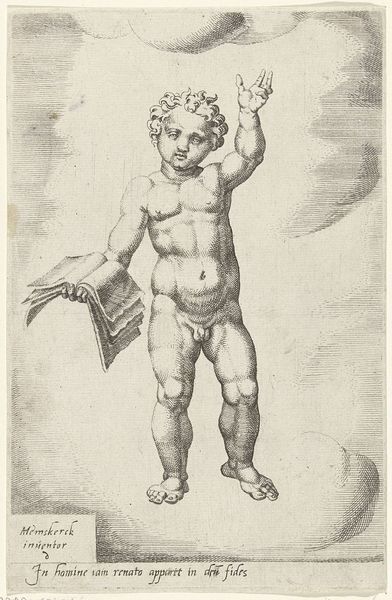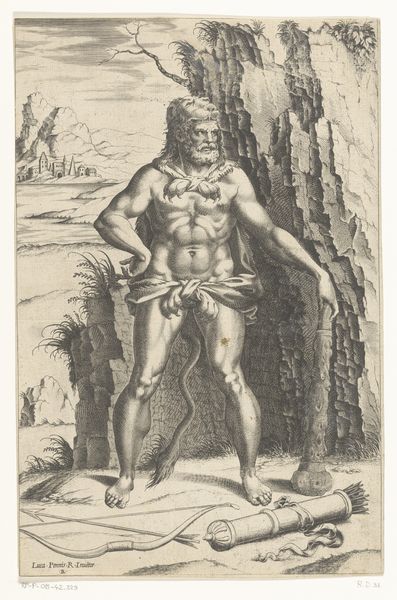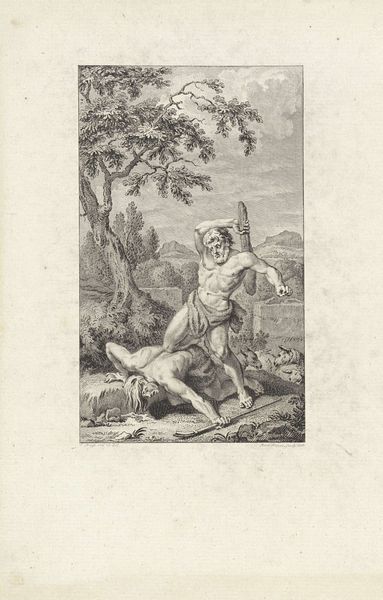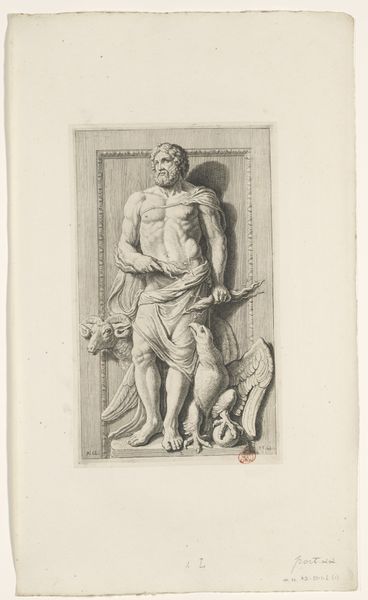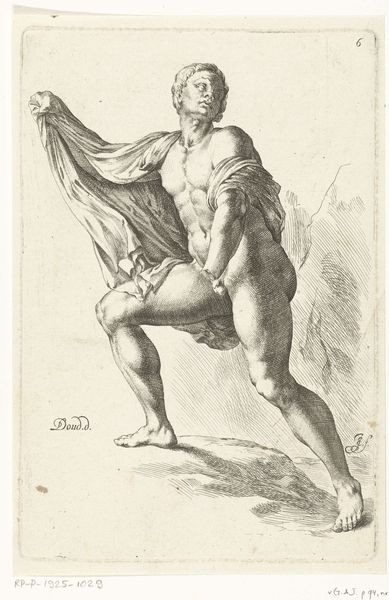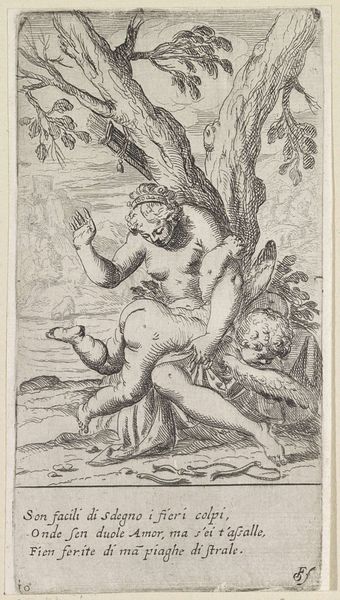
print, engraving
#
baroque
# print
#
classical-realism
#
figuration
#
history-painting
#
nude
#
engraving
Dimensions: height 89 mm, width 65 mm
Copyright: Rijks Museum: Open Domain
Editor: This is "Vulcanus", an engraving from between 1647 and 1714, by Sébastien Leclerc I. It depicts a nude, bearded man leaning on a hammer and sitting atop some armor. The detail is really striking, given that it's a print. I'm curious about the message behind it. What can you tell me about the context and meaning of this work? Curator: Well, engravings like this played a crucial role in disseminating knowledge and cultural values in the early modern period. This is not just a portrait, but an idealized representation of Vulcan, the Roman god of fire, metalworking, and the forge. He is depicted as a powerful, virile figure despite his often-lame status in mythology. Consider where an image like this would circulate. Editor: So, not just in books, but maybe also displayed in workshops or studios as a kind of aspirational figure? Curator: Precisely! Think about the patrons for whom Leclerc I was working. They included Louis XIV, academies, the French Royal Court and many nobles. So who consumes these kinds of images? How do they speak to power and artistic status? Editor: That makes a lot of sense. By associating with classical figures and virtues, you are associating yourself with legitimacy and strength, and signaling that to others of high status. Is this part of a broader trend in art at the time? Curator: Absolutely. This work demonstrates a powerful combination of Classical Realism and Baroque elements, which, together, spoke to specific class-conscious visual expectations during that period. The nudity evokes classical ideals, while the dynamism suggests a connection to emerging ideas within society. Editor: I never considered it that way before, this image is so much more than what meets the eye. I always thought it was *just* a depiction of the Roman god Vulcanus, however, considering its dissemination channels and sociopolitical purpose, it shows us the aspirations of patrons and nobles from that period.
Comments
No comments
Be the first to comment and join the conversation on the ultimate creative platform.
